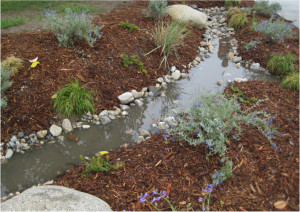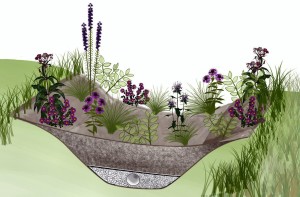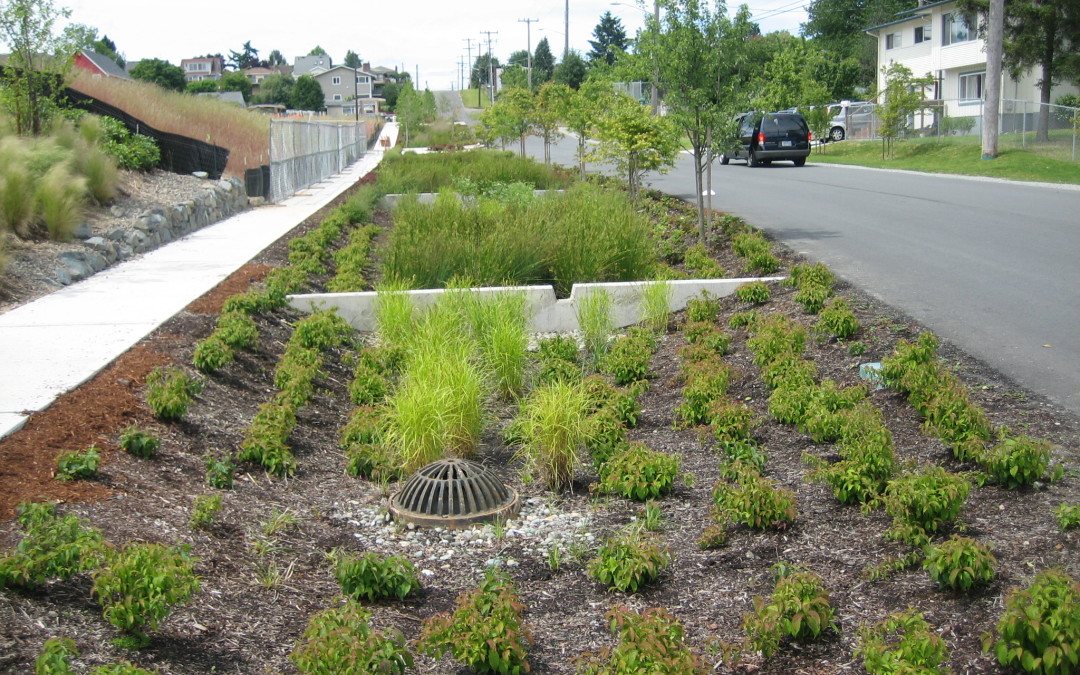What is a bio-swale? With the recent wet springs, many of us have experienced prolonged wet and spongy conditions in our lawns as our normal rain patterns, at times have been on the extreme side. Normal drainage flows through our properties have been asked to handle more water than they were originally designed. Most  subdivisions have been engineered to collect water between properties, carry this water to the back of the lot where it meets other runoff from surrounding properties and is slowly moved long distances to the nearest street drain.
subdivisions have been engineered to collect water between properties, carry this water to the back of the lot where it meets other runoff from surrounding properties and is slowly moved long distances to the nearest street drain.
To compound this scenario, some neighbors have inadvertently altered these passageways on their lots with mini barns, gardens, fences, etc. Not realizing the effects to the original drainage design of the entire area they live in. We are often called to rectify such issues for individual property owners when severe backups of water occur on their lots.
These “swales” are designed to move the water away, albeit at a very shallow, slow pace. When obstacles are put in place down the line this can lead to pooling water on other lots. Subsurface drain pipe and additional soil to correct grade are often utilized to correct these problems. Incorporating native plant species is also a great addition to pipe and soil.
 Bio-swales are generally constructed in situations, similar to the one I have described above. Shallow passageways that carry water from one point to another and are aesthetically planted with native flora to help filter water through soil and plants before it enters a storm drain. The importance of filtering water runoff is growing in need daily. We know that most water runoff today, contains hard metals from roads, roofs, and hard surfaces, as well as lawn chemicals from fertilization. Filtering these hard materials before they enter our drinking water system is vital to the longevity of our rivers and streams.
Bio-swales are generally constructed in situations, similar to the one I have described above. Shallow passageways that carry water from one point to another and are aesthetically planted with native flora to help filter water through soil and plants before it enters a storm drain. The importance of filtering water runoff is growing in need daily. We know that most water runoff today, contains hard metals from roads, roofs, and hard surfaces, as well as lawn chemicals from fertilization. Filtering these hard materials before they enter our drinking water system is vital to the longevity of our rivers and streams.
Plants can consist of both perennials and woody shrubs and can be designed to work in both sunny and shady locations. Plant selection is key to the performance of these swales and the light requirements that exist on a particular site. Plants can be utilized that attract butterflies and birds or just to enhance an otherwise utilitarian space. When designed properly, these seemingly terrible water problems can become a wonderful, environmentally friendly, and low maintenance addition to your landscape. Attracting all that nature has to offer and enhancing ones personal surroundings.

